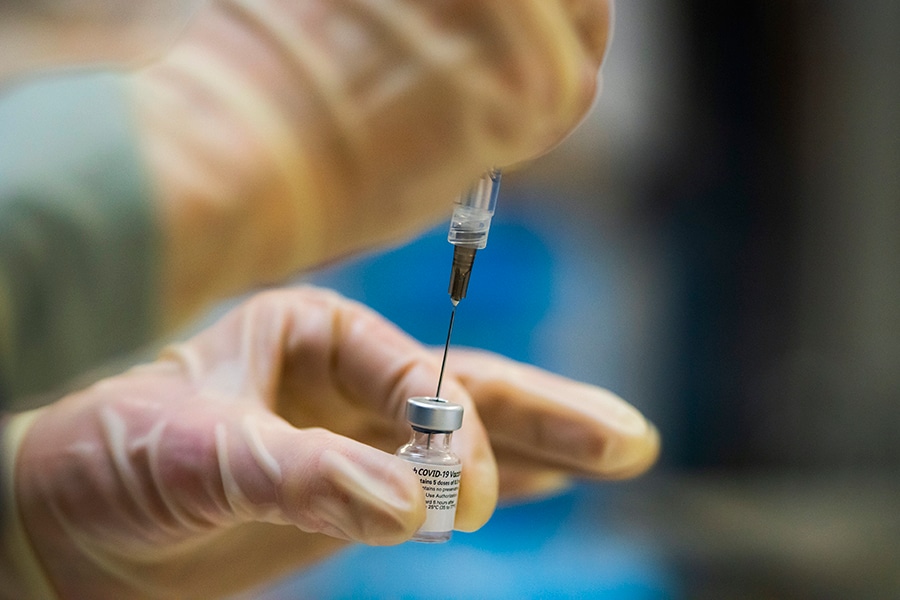
Hospitals discover a surprise in their vaccine deliveries: Extra doses
How an inadvertent error by Pfizer could improve the supply of the Covid-19 vaccine to more people
 Image: Nathan Howard/Getty Images
Image: Nathan Howard/Getty Images
As boxes of Pfizer vaccines began arriving around the country this week, hospital pharmacists made a surprising discovery: Some of the glass vials that are supposed to hold five doses contained enough for a sixth — or even a seventh — person.
The news prompted a flurry of excited exchanges on Twitter and pharmacy message boards this week as hospital workers considered the tantalizing possibility that the limited supply of desperately needed vaccine might be stretched to reach more people.
But it also set off a wave of confusion and debate over whether to use the extra doses, or to throw them out. At Northwell Health in New York, for example, an executive estimated that the hospital network might have thrown out enough extra vaccine to account for 15 to 20 doses while it waited for guidance from the state Health Department.
On Wednesday, the pharmacists got an answer. In a statement, the Food and Drug Administration said that, “given the public health emergency,” it was acceptable to use every full dose left over in each vial. The agency said it was consulting with Pfizer to determine “the best path forward” and advised health officials not to pool doses from multiple vials.
“We never want to waste — waste medication, waste vaccine,” said Anna Legreid Dopp, senior director of clinical guidelines and quality improvement at the American Society of Health-System Pharmacists. “So that would be exciting if that is an opportunity.”
©2019 New York Times News Service




